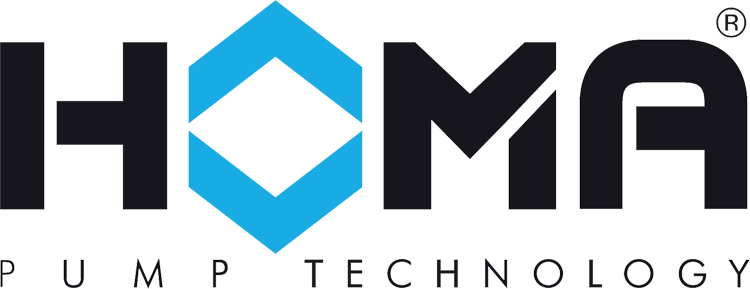The Hidden Costs of Selecting the Wrong Pump
Choosing the wrong pump for an application can result in significant hidden costs over the pump’s lifespan. While a misselected pump might still function, inefficiencies and frequent issues will drive up operational expenses in ways that aren’t always immediately obvious. From wasted energy to increased maintenance and shortened equipment life, improper pump selection can turn what seemed like a cost-saving decision into a long-term financial drain. At HOMA Pump, we emphasize that proper pump selection is critical for achieving both efficiency and reliability.
Energy Inefficiency & Operational Costs
An improperly selected or sized pump often operates far from its best efficiency point (BEP), meaning it uses more power than necessary for the workload. In fact, an industry evaluation of 1,690 pumps found that the average pumping efficiency was below 40%, with over 10% of pumps operating at shockingly low efficiency levels of under 10%. Improper pump selection was identified as a major contributing factor.
This wasted energy translates to higher electricity bills year after year. As a rule of thumb, running an oversized pump and motor can cost roughly $1 per day, per horsepower in energy usage. For example, a pump that is 20 HP larger than required could be wasting thousands of dollars annually in unnecessary energy costs. In industrial facilities where multiple pumps operate continuously, these inefficiencies can add up to tens or even hundreds of thousands of dollars per year.
Additionally, inefficient solids handling pumps generate excess heat and strain, which can lead to premature component degradation. Over time, running a pump far from its BEP can cause seal failures, bearing wear, and impeller damage, further increasing operational costs and the likelihood of unexpected shutdowns.
Maintenance, Downtime & Failure Costs
The wrong pump selection can lead to chronic maintenance problems. For example, effluent pumps not designed for the fluid being handled or for the required head may experience cavitation, excessive vibration, or overload, all of which can cause damage to impellers, motors, and seals.
- Pump Cavitation: A frequent issue caused by improper pump selection, cavitation occurs when the pump’s Net Positive Suction Head (NPSH) is inadequate for the application. This results in vapor bubbles forming and collapsing inside the pump, effectively “eating away” at impellers and leading to premature failure of seals and bearings.
- Overloading and Overheating: When a pump is undersized for the application, it may struggle to meet demand, leading to overheating and motor overload. This not only increases repair frequency but also shortens the life expectancy of the pump.
Each failure or unplanned shutdown results in downtime costs—lost productivity and emergency repair expenses. In industrial settings, just one hour of downtime can cost as much as a new pump, particularly if the pump is part of a critical process. Moreover, maintenance crew call-outs, spare parts (such as seals, bearings, or even an entire replacement pump), and associated labor can far exceed any initial savings from selecting a cheaper or incorrect model.
Additionally, running a pump outside its manufacturer-suggested application range can cause extreme vibration, significantly reducing its mean time between failures (MTBF). In some cases, an improperly selected pump may need to be replaced or overhauled twice as frequently as a properly selected one.
Real-World Examples of Costly Misselection
Selecting the wrong pump can lead to significant operational challenges and financial burdens. A relevant example involves a wastewater facility processing effluent from produce and packaging operations for a major supermarket chain in the Northeast. Initially, the facility employed cutter/chopper pumps from a reputable manufacturer. However, these pumps frequently clogged due to the fibrous plant matter in the wastewater forming rag balls around the cutter blades.
To address the problem, the facility transitioned to a HOMA AMS series single vane, non-clog pump. This pump features large, smooth solids passages, making it more effective at handling fibrous materials. The retrofit was seamless, utilizing the existing guide rail system and control panel. After six weeks of operation, the facility reported no alarms or maintenance issues, indicating a significant improvement in reliability and a reduction in maintenance costs.
This case underscores that the initial purchase cost of a pump is only a fraction of its total life-cycle cost.
Investing in Proper Pump Selection
It is far more economical to invest time and resources into proper pump selection from the outset than to “pay” for a bad choice over many years. To avoid these hidden costs:
- Work with experienced pump manufacturers to select a pump that matches your specific application needs.
- Use pump selection software like HOMA’s HOP.SEL to ensure optimal sizing and efficiency.
- Consider long-term operational costs, not just the upfront purchase price.
- Review pump performance curves to ensure operation near its BEP.
- Follow industry best practices for material compatibility, energy efficiency, and maintenance planning.
By making an informed pump selection, businesses can reduce energy waste, minimize downtime, and extend the lifespan of their equipment, ultimately leading to substantial cost savings. At HOMA Pump, we are committed to helping industries choose the right submersible pumps for long-term performance and efficiency. Contact our team today for expert guidance on selecting the best pump for your needs.
References
Pumps and Systems. Proper Pump Selection: Avoid Oversizing Your Pumps. Dominik Fry. Available at: https://www.pumpsandsystems.com/proper-pump-selection-avoid-oversizing-your-pumps
